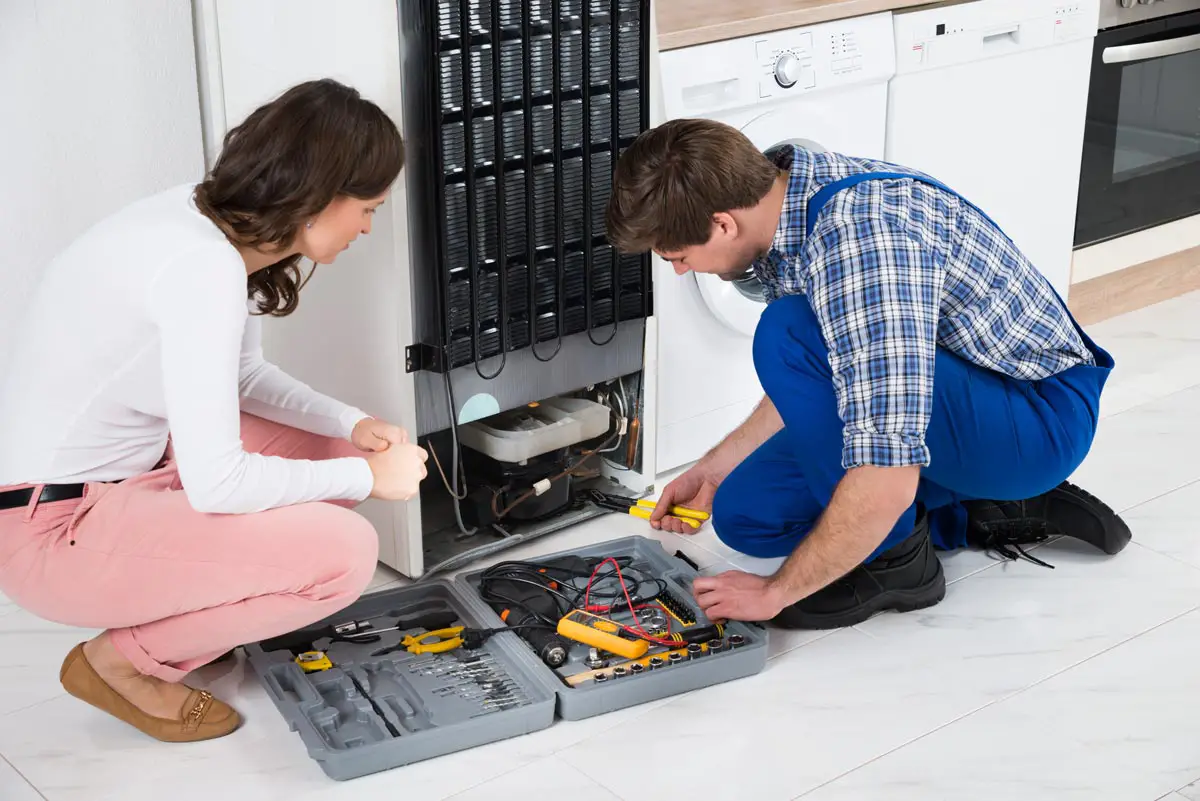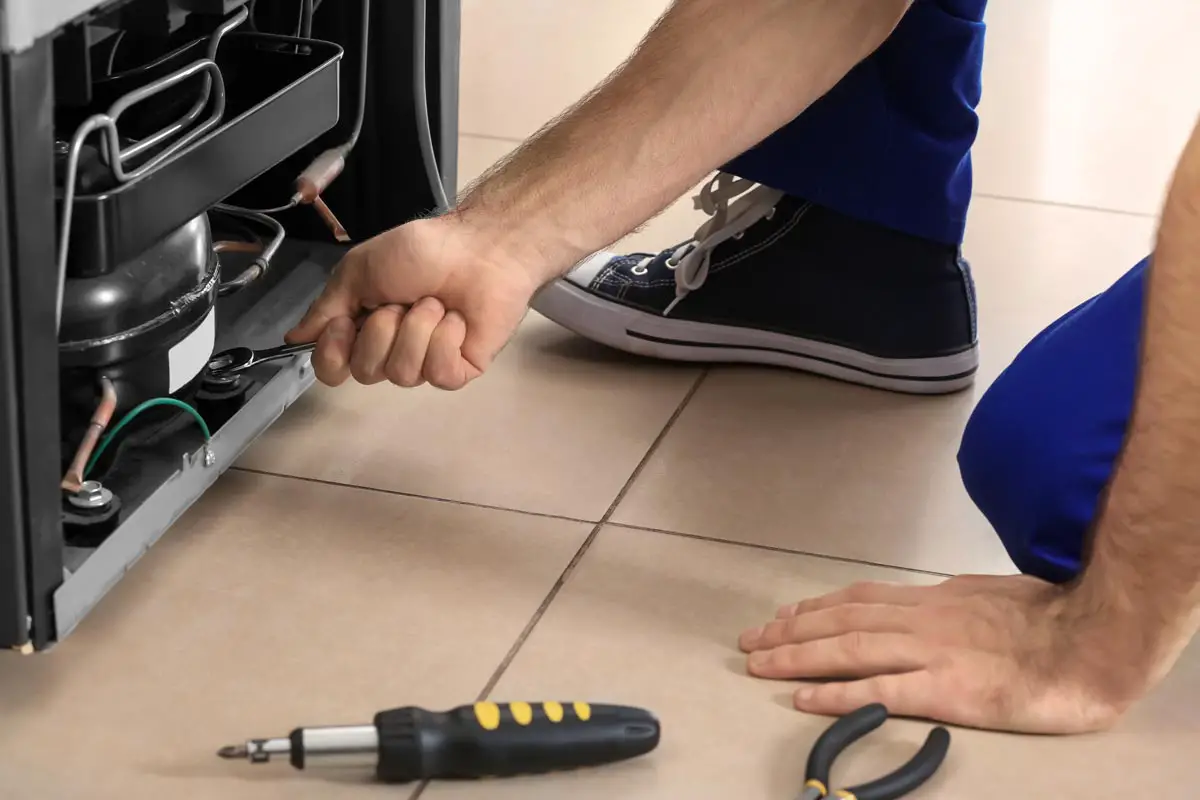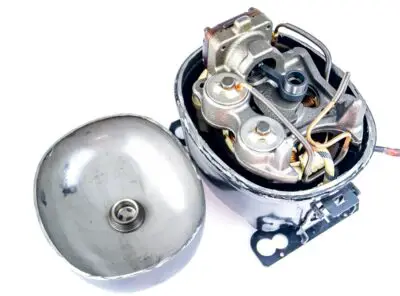How To Add Coolant To Refrigerator?

Refrigerators are exceptional pieces of technology that have enabled us to preserve our food for extended periods. However, they do require maintenance from time to time, such as additional coolant. But how do you add coolant to your refrigerator?
You’ll know your refrigerator needs coolant if you’ve checked various fridge components, and they’re working fine, but the fridge is not cooling. Thus you may have a coolant leakage. First, you’ll want to solder any pipes where the coolant is leaking from, check the coolant via a specialized gauge, and if low, add more coolant to your refrigerator.
How To Know If Refrigerator Needs Coolant
Suppose you’ve noticed that your refrigerator has suddenly begun dropping its temperatures and hasn’t kept your food as chilled as usual. In this case, you know you have a problem with your refrigerator. Often this is a problem with a component, whereas others may assume it’s time for a fill-up on coolant.
Freon was once the primary coolant used in refrigerators; however, after its slow phase-out beginning in 2010, a ban was issued in 2020 stating that a safer alternative would be used, known as HFC-134a.
It’s unlikely that a coolant problem is the leading cause of your fridge’s malfunction, as the freon or HFC-134a coolant is sealed and in constant supply within the refrigerator. However, if you’ve tested the various components, which all seem to be working fine, you may have a coolant leak.
Various tests can determine whether or not your fridge’s recent problems stem from either a coolant leakage or a problem with one of the other miscellaneous components.
Testing For A Coolant Leakage
To assess whether or not you have a coolant leakage, you can try the following steps and possibly even solve the problem for yourself.
First, you” want to locate the fridge’s condenser and place your hand next to it to feel if any heat is coming off. If the consignor is chilled or cold, this tells you that the refrigerator has been running and no components are damaged.
However, this does mean that you may have a lack of freon or coolant due to a leak, or that you have a faulty condenser or clogged system. Next, you’ll want to unplug your fridge and turn off its temperature control.
Once this has been completed, place your ear up against the side of your fridge and listen for gurgling or hissing sounds, as this indicates that the coolant is present. Silence may mean that you lack coolant, or it may indicate a problem with the condenser, filter dryer, defroster, cap tube, or fan.
The third step is to remove the cover from the fridge’s evaporator, close to the freezer’s fan. Plug the refrigerator back in and turn on the temperature control to the desired settings
Allow the refrigerator to run for five minutes with the door closed, and then open it and check the evaporator for frost. Again, if there is an absence of frost, this could indicate that your fridge has been leaking out its coolant or has a clogged system.

How To Add Coolant To Refrigerator
If you trace the problem back to a lack of Freon or HFC-134a, you can top this up yourself. Just remember that Freon is a highly hazardous gas. Most fridges made after 2010 will no longer utilize Freon, so ensure you check which coolant your fridge needs.
Various health professionals have suggested that inhaling freon or coolant gas can lead to numerous health problems, including respiratory difficulty, brain damage, burns, and even death. This is why it’s often recommended to hire a professional to recharge the freon.
HFC-134a is the most common refrigerant or coolant used in fridges today. Adding this gas to a refrigerator is a tough task. If you add too much, use the wrong kind of coolant, or fail to install the piercing valve accurately, you may permanently damage your refrigerator.
Suppose you decide to add freon to your refrigerator yourself. In that case, you should be comfortable with your abilities when working on fridges. Ensure that you follow all the safety protocols.
The Process Of Adding Coolant To Your Fridge
When adding coolant to your refrigerator, you’ll have first identified a leakage that has caused a reduction of the coolant within your fridge. So, firstly, you’ll need to check the various vents and defrost any frozen coils.
After this, fix any leaking pipes by replacing them or using a soldering iron to repair them. Then you’ll want to install a bullet-piercing valve to check the level of coolant with the use of a specialized gauge.
If this is the case, and you need to add Freon or an alternative coolant, you’ll want to ensure you add the right one. Start by opening your fridge door and look for the plastic or metal label with the product information, which will list the correct coolant.
Finally, connect your coolant refill hose to the adaptor and ensure that you use the previously mentioned label to determine how much coolant is needed.
Various coolant tanks will come with a gauge that allows you to monitor hows much coolant is being released into the fridge’s storage system. If it doesn’t come with one, you’ll have to use trial and error to get your coolant to the appropriate range.
There are also topics like these that might interest you like what does a refrigerant leak smell like and what it means when your refrigerator makes noise
Conclusion
So, now you know how to add coolant to your fridge, you’re ready to get your fridge back to optimal working order. Just remember to ensure that the problem doesn’t lie with one of the components before adding any coolant.








